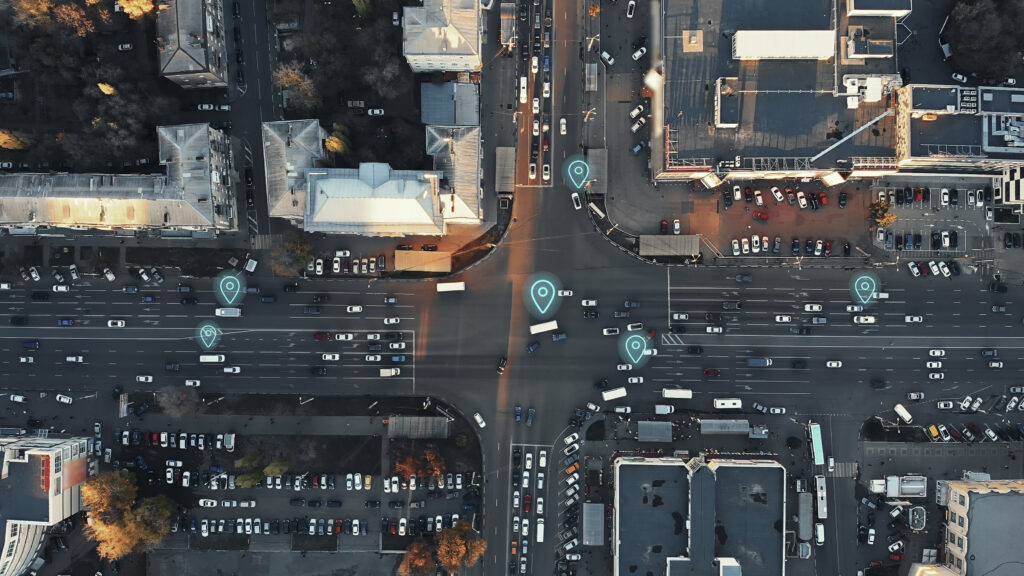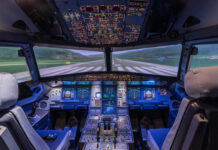
The ability to track objects, people, vehicles, and other and assets with hyper-accurate precision is about to revolutionize some of the world’s largest industries. But what exactly is hyper-accurate position tracking, and why is it such a game-changer? Join us as we explore the technical foundations of this technology, its wide-ranging impacts across various sectors, and how it is redefining precision in industries like logistics, marketing, worker safety, asset management, smart city design, and transportation.
Understanding Hyper-Accurate Position Tracking
Hyper-accurate position tracking refers to the ability to determine the precise location of an object or individual with an exceptionally high degree of accuracy—often down to a few centimeters or even millimeters. This is made possible through a combination of advanced technologies.
Global Navigation Satellite Systems (GNSS) are augmented by systems like Differential GPS (DGPS), Real-Time Kinematic (RTK), and Precise Point Positioning (PPP) to enhance traditional GPS accuracy from meters to centimeters. Ultra-Wideband (UWB) technology, a wireless communication protocol operating over a broad frequency spectrum, allows for highly accurate short-range positioning by determining the time it takes for signals to travel between two points with extreme precision. Inertial Measurement Units (IMUs), which combine accelerometers, gyroscopes, and sometimes magnetometers, track an object’s orientation and movement, providing continuous, high-precision tracking even in environments where satellite signals are weak or unavailable.
Machine learning and data fusion further enhance accuracy by integrating inputs from multiple sources, such as GNSS, UWB, IMUs, and even visual or infrared sensors. This multifaceted approach minimizes errors and improves reliability, making hyper-accurate position tracking a powerful tool in complex environments.
The Logistics Industry: Streamlining Operations and Enhancing Efficiency
With a clear understanding of hyper-accurate position tracking, it’s easy to see how this technology is transforming the logistics industry. Logistics operations, traditionally dependent on GPS and other less precise tracking systems, often face challenges such as delays, misrouted shipments, and inefficient use of resources. Hyper-accurate position tracking addresses these issues head-on, offering unprecedented levels of precision that streamline operations and cut costs.

Optimized Routing and Resource Allocation
Hyper-accurate tracking enables logistics companies to optimize routing by providing real-time, centimeter-level updates on the location of vehicles and goods. This precise data allows for dynamic route adjustments to avoid traffic congestion, accidents, or other delays, thereby reducing fuel consumption and delivery times. Additionally, the ability to monitor assets with such accuracy ensures that resources are allocated more efficiently, minimizing downtime and maximizing productivity.
Enhanced Inventory Management
Inventory management is another area where hyper-accurate position tracking shines. Warehouses equipped with UWB systems and other advanced tracking technologies can monitor the exact location of items within the facility. This level of detail not only reduces the time spent searching for products but also helps in maintaining optimal inventory levels, reducing the risk of overstocking or stockouts.
Improved Last-Mile Delivery
The last mile of delivery is often the most challenging and costly part of the logistics process. Hyper-accurate tracking allows for precise delivery location data, enabling delivery personnel to find exact drop-off points quickly and efficiently. This reduces delivery times, enhances customer satisfaction, and lowers operational costs.
Marketing Implications: Revolutionizing Targeting and Personalization
The impact of hyper-accurate position tracking extends far beyond logistics, with profound implications for marketing. In an era where personalization is key to customer engagement, the ability to track consumer locations with high precision opens up new possibilities for targeted marketing.
Location-Based Advertising
With hyper-accurate tracking, marketers can deliver location-based ads with pinpoint accuracy. For example, a retailer can send a personalized promotion to a potential customer as they walk past a store, or even target ads based on the specific aisle a shopper is in. This level of granularity enables highly relevant and timely marketing messages, increasing the likelihood of conversion.
Enhanced Consumer Insights
Beyond advertising, hyper-accurate tracking provides valuable insights into consumer behavior. By analyzing movement patterns within a store or across different locations, marketers can gain a deeper understanding of customer preferences, shopping habits, and the effectiveness of in-store layouts. These insights can then be used to optimize marketing strategies and improve customer experiences.
Geofencing and Proximity Marketing
Hyper-accurate position tracking also enhances geofencing capabilities, allowing marketers to create highly specific virtual boundaries around locations. When a customer enters or exits these zones, they can receive targeted messages or offers. Proximity marketing strategies, such as beacon technology, are similarly enhanced by the ability to deliver content with centimeter-level precision, further personalizing the shopping experience.
Worker Safety: Protecting Employees in Hazardous Environments
In industries where worker safety is paramount, hyper-accurate position tracking offers significant benefits by enabling more effective monitoring and risk mitigation strategies.
Real-Time Location Monitoring
In hazardous work environments such as construction sites, mines, or manufacturing plants, knowing the exact location of workers in real-time can be a lifesaver. Hyper-accurate tracking systems can alert supervisors when workers enter dangerous areas, enabling immediate intervention. These systems can also be integrated with wearable devices to monitor vital signs and environmental conditions, providing a comprehensive approach to worker safety.
Enhanced Evacuation Procedures
During emergencies, such as fires or chemical spills, hyper-accurate tracking ensures that all workers can be quickly located and evacuated. Real-time data allows for more efficient coordination of evacuation efforts, reducing the risk of injury or loss of life.
Reducing Workplace Accidents
By continuously monitoring worker movements and providing real-time feedback, hyper-accurate tracking systems can help reduce the likelihood of accidents. For example, in a warehouse setting, tracking the precise location of both workers and equipment can prevent collisions and other mishaps.
Asset Management: Maximizing Efficiency and Reducing Loss
Asset management is another critical area where hyper-accurate position tracking is making a significant impact. Whether it’s tracking high-value equipment, vehicles, or inventory, the ability to pinpoint the exact location of assets at any given moment is invaluable.
Preventing Theft and Loss
Hyper-accurate tracking systems provide real-time visibility into the location of assets, making it easier to detect and prevent theft or loss. If an asset is moved without authorization, the system can immediately trigger an alert, allowing for quick action to recover the item.
Optimizing Asset Utilization
By providing detailed insights into the location and usage patterns of assets, hyper-accurate tracking helps companies optimize their asset utilization. For example, in a fleet management scenario, knowing the exact location and status of each vehicle enables more efficient dispatching, reducing idle time and improving overall productivity.
Streamlined Maintenance Scheduling
Accurate location data also plays a crucial role in maintenance scheduling. By tracking the precise usage of equipment, companies can implement predictive maintenance strategies, ensuring that assets are serviced at the optimal time and reducing the likelihood of unexpected breakdowns.
Smart City Design: Building the Cities of the Future
As cities become smarter and more connected, hyper-accurate position tracking is playing a crucial role in urban planning and management. From traffic control to public safety, this technology is helping to build more efficient, sustainable, and livable cities.
Traffic Management and Congestion Reduction
Hyper-accurate tracking enables real-time monitoring of traffic flow, allowing city planners to optimize traffic signal timings, manage congestion, and reduce travel times. This technology can also support the development of intelligent transportation systems, where vehicles communicate with each other and with infrastructure to improve traffic efficiency and safety.
Public Safety and Emergency Response
In a smart city context, hyper-accurate tracking enhances public safety by enabling real-time monitoring of people and vehicles. During emergencies, this technology can help first responders locate individuals more quickly and coordinate their efforts more effectively. Additionally, hyper-accurate tracking can be used to monitor crowds during large events, ensuring that any potential issues are identified and addressed promptly.
Urban Planning and Infrastructure Development
Accurate data on the movement of people and vehicles is invaluable for urban planning. By analyzing this data, city planners can make informed decisions about where to build new infrastructure, how to design public spaces, and how to improve the overall livability of the city. Hyper-accurate tracking provides the granular detail needed to optimize these decisions and create cities that are better suited to the needs of their residents.
Transportation: Paving the Way for Autonomous Vehicles and Beyond
The transportation sector is on the cusp of a revolution, with hyper-accurate position tracking serving as a key enabler of emerging technologies like autonomous vehicles and advanced public transit systems.
Autonomous Vehicle Navigation
Autonomous vehicles (AVs) rely on hyper-accurate position tracking to navigate safely and efficiently. Traditional GPS systems are insufficient for the level of precision required by AVs, particularly in complex urban environments. By integrating advanced GNSS, UWB, and sensor fusion technologies, AVs can achieve the centimeter-level accuracy needed to stay within lanes, avoid obstacles, and interact with other vehicles and infrastructure.
Intelligent Public Transit Systems
Public transit systems can also benefit from hyper-accurate tracking, allowing for real-time monitoring of buses, trains, and other vehicles. This data can be used to optimize routes, reduce delays, and improve the overall efficiency of the transit network. Passengers can receive real-time updates on vehicle locations and arrival times, enhancing the convenience and reliability of public transportation.
Enhanced Fleet Management
For transportation companies, hyper-accurate tracking offers numerous advantages in fleet management. From optimizing routes to monitoring driver behavior, this technology helps reduce operational costs, improve safety, and increase customer satisfaction. Additionally, hyper-accurate tracking enables better coordination between different modes of transportation, such as trucks, ships, and trains, ensuring that goods are moved more efficiently across the supply chain.
Conclusion: The Future of Precision
Hyper-accurate position tracking is more than just a technological advancement—it’s a fundamental shift in how we understand and interact with the world. From logistics and marketing to worker safety, asset management, smart city design, and transportation, this technology is driving innovation and efficiency across multiple sectors. As we continue to refine and expand the capabilities of hyper-accurate tracking, its impact will only grow, paving the way for a future where precision is no longer a limitation but a standard. The possibilities are vast, and the potential benefits are immense, making hyper-accurate position tracking a cornerstone of the next era of technological advancement.
For those interested in staying ahead in industries like logistics, marketing, worker safety, asset management, smart cities, and transportation, understanding and integrating hyper-accurate position tracking will be essential. As this technology evolves, it will continue to redefine precision, offering new opportunities to enhance efficiency, safety, and overall effectiveness in various fields.
The future of precision is here, and it is hyper-accurate. Embracing this technology now will not only provide a competitive edge but will also help shape the way industries operate, cities are designed, and lives are protected in the years to come. The question is no longer if hyper-accurate position tracking will transform our world but how quickly we can harness its full potential.




